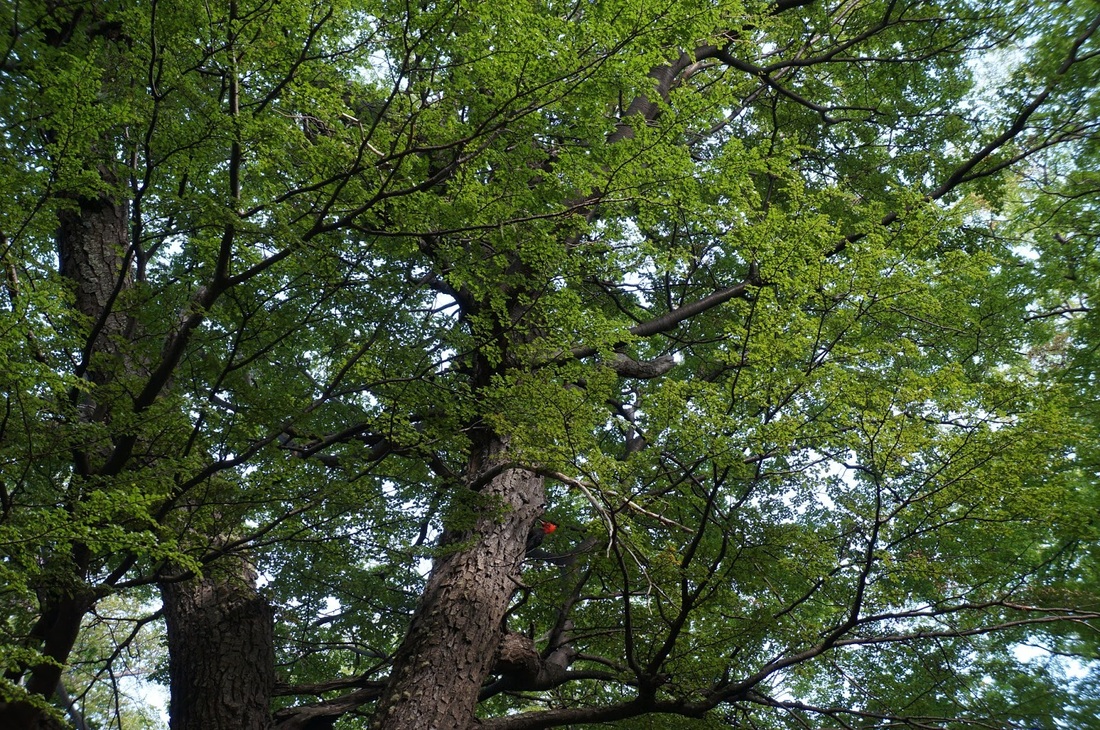ASC Adventurers, Karen and Markus, record instances in biodiversity in South America
https://2enroute.blogspot.com/.
It was morning in the forest, sunlight filtering through gaps in the old growth lenga stand, when we heard the drumming. Markus and I paused on the trail, pulling out camera and binoculars respectively, and looked around for the source. Then we saw it: a brilliant, feathery red crest and large, stout bill hammering forcefully against the trunk of a large, old tree. Little chunks of bark sailed through the air and landed on the forest floor nearby. Woodpecker!
Woodpeckers are a favorite guild of birds for both Markus and I, and Feb. 8th on the northern boundary of Parque Nacional Los Glaciares was the first day we saw them here in Patagonia. As we dropped our backpacks and walked into the forest, we heard several of the birds calling to one another and soon saw a second woodpecker fly in and alight on a nearby tree. This one lacked a red crest but had an equally striking and unusual curly-cue of black feathers curving from the top of its head. It was the female Carpintero Gigante (Magellanic woodpecker), chattering back and forth with the red-crested male. As luck would have it, we saw 9 of the birds that day. We traversed 30km from a campsite in the national park to the Argentinian border post north of Lago del Desierto across a mosaic of habitats and land-use designations, from forested national park, past private forests and more open (hot, windy) ranchlands, and along the shore of the mountainous Lago del Desierto rimmed by glaciers and their meltwater cascades spilling off of the southern ice cap–and at several points, always in open old-growth forest habitats, we heard the tell-tale drumming and chattering of the woodpeckers. We probably spent a good hour or more of time and several hundred photograph attempts on observing the birds that day!
Recognizing the immensity of wildlands in South America, the PBI´s goals are to collect and communicate information about such places on an international scale to support efforts to conserve global biodiversity. They rely largely on citizen scientists, both local and visiting, to collect the data needed to map the wildlands of South America. Every day we record our wildlife sightings (with a special focus on birds) along with ecological, land-use, and cultural observations of the area. Some days are full of exciting observations, usually when our walking goals and weather allow for dilly-dallying along with the binoculars. Our first day trekking through Cerro Castillo National Reserve was one such day, as we passed by a grassland and wetland full of hundreds of geese, ducks, and black-billed ibises. Other days when the wind howls and we are pelted by icy rain, we don´t observe much (though of course the birds usually seem to be huddled under their own ´´down blankets´´ just like us on those days). We catalogue data from well-studied national parks and from little-studied private lands. It is hard to know with certaintly whether this data will be useful, but it is our hope that this little contribution can help. At the very least, we get the added satisfaction of knowing that all that time staring at birds might amount to something beyond ourselves.

